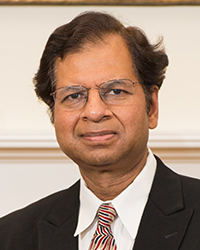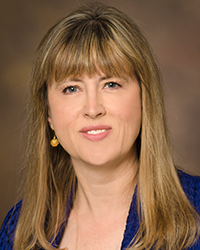
Uday Jain, MD, PhD, FACA, FASA
Perioperative infections are always a concern for anesthesiologists. Now, in the presence of COVID-19, even more effort and energy are being directed at this topic as anesthesiologists lead multidisciplinary initiatives to prevent hospital-acquired infections (HAI) by PPE, hand sanitation, and OR procedures.
“In a 2015 study, bacterial transmission in the OR anesthesia work area was associated with 30-day postoperative infections, impacting as many as 16% of patients undergoing surgery,” said Brenda A. Gentz, MD, Associate Professor of Anesthesiology and Anesthesia Medical Director at Banner University Medical Center in Tucson. “Anesthesia provider hand contamination was a source of both enterococcal and staphylococcal infections.”
Dr. Gentz is one of three experts who will present risk-reducing recommendations for anesthesiologists during today’s session “Are We Vectors for Perioperative Infections?” She will be joined by Uday Jain, MD, PhD, FACA, FASA, Staff Anesthesiologist at San Mateo Medical Center in California; and Brenda G. Fahy, MD, Professor of Anesthesiology and Associate Chair of Critical Care Medicine, and Program Director of Adult Combined Cardiothoracic Anesthesiology, at the University of Florida in Gainesville.

Brenda A. Gentz, MD
In addition to HAIs, anesthesiologists must also consider surgical site infections (SSIs), urinary tract infections (UTIs) and central line-associated blood stream infections. They play a critical role in helping prevent these infections, and it all begins in the OR, said Dr. Gentz.
Anesthesiologists must think about how surgical instruments are handled and the potential of cross contamination, prepping skin with chlorhexidine, using sterile techniques to prevent central line contamination, and, of course, wearing the proper PPE.
PPE for use in the OR by anesthesiologists should include equipment proven to be effective in preventing the transmission of COVID-19.
Are We Vectors for Perioperative Infections?
2-3 p.m. CT
Monday, October 5
“Until the COVID-19 pandemic is controlled by vaccines and other means, it is the most important perioperative infection,” said Dr. Jain. He recommends the specific PPE devices that have been demonstrated to reduce the transmission of SARS-CoV-2. “An N95 respirator or elastomeric half-facepiece respirator combined with a face shield or protective goggles provide adequate protection. Alternatively, a powered air-purifying respirator can be utilized.”
Even these may not help prevent SSI, though. Scrub suits, masks, and head and face coverings have been demonstrated to reduce bacterial counts, but not SSI, Dr. Jain said.
A central focus for preventing infection, though, remains good hand sanitation. Although this sounds simple, it can pose a problem for doctors who strive to adhere to guidelines offered by the World Health Organization (WHO).
WHO recommends following what it describes as “5 Moments for Hand Hygiene” for infection prevention and control, said Dr. Gentz. It proposes these times for hand sanitation:
- Before aseptic tasks (inserting central venous catheters, inserting arterial catheters, drawing medication, and spiking IV bags)
- After removing gloves
- When hands are soiled or contaminated (for example, by oropharyngeal secretions)
- Before touching the contents of the anesthesia cart
- When entering and exiting the OR (even after removing gloves)
“The problem is that the indications for WHO’s 5 Moments of Hand Hygiene can be as frequent as 54 times per hour, so for many anesthesiologists, this is impossible to do while we are caring for patients,” Dr. Gentz said. “So the question becomes, what can we do?”
Reducing perioperative risk isn’t just about patient safety, it’s about the well-being of all health care professionals, added Dr. Jain.
“According to the CDC, the data shows that, of the (SARS-CoV-2) infected persons in the U.S., about 15% are health care professionals and about 6% of health care professionals have the antibody to SARS-CoV-2,” he said. “More than 1,000 U.S. health care professionals have died.”
Return to Index